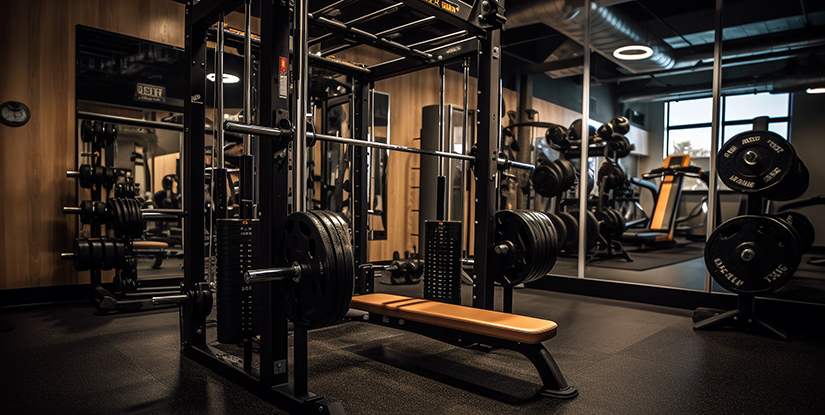Gym and Fitness Equipment Guide | Professional Buying & Use Tips

Overview of Gym and Fitness Equipment
Gym and fitness equipment form the backbone of any effective training environment. Whether equipping a commercial facility, a corporate wellness center, or a home gym, selecting the right combination of machines, free weights, and accessories is essential for safety, performance, and long-term value. This guide provides a professional framework for understanding categories, selection criteria, maintenance, and programming considerations.
Categories of Equipment
Cardio Equipment: treadmills, ellipticals, stationary bikes, rowing machines; designed to improve cardiovascular fitness and calorie expenditure.
Strength Equipment: plate-loaded machines, selectorized machines, cable stations, free weights (dumbbells, barbells) and power racks for hypertrophy and strength development.
Functional Training: kettlebells, medicine balls, battle ropes, plyometric boxes, TRX suspension systems; supports movement quality, mobility and sport-specific conditioning.
Recovery and Flexibility Tools: foam rollers, massage guns, stretching aids and mobility bands to support regeneration and injury prevention.
Accessories and Small Equipment: mats, resistance bands, weightlifting belts and collars, gym flooring and storage solutions that streamline workflows and safety.
Selection Criteria
Goals and Programming: Base choices on training goals—endurance, hypertrophy, strength, or general fitness. Commercial programs need higher durability than home setups.
Space and Layout: Measure available space and account for movement zones, aisle clearances and ceiling height for overhead movements.
Budget and Total Cost of Ownership: Consider up-front cost, installation, maintenance, warranty and potential resale value.
Durability and Brand Reputation: Select equipment with proven components—industrial bearings, reinforced frames, reliable electronics—and verify service networks.
User Experience and Accessibility: Adjustable settings, user-friendly interfaces and inclusive options for varying fitness levels improve member retention.
Installation and Layout Best Practices
Plan traffic flow with distinct zones for free weights, machines and cardio. Provide adequate clearance around cardio equipment and secured storage for plates and accessories. For commercial installations, comply with local building codes, electrical capacity and ventilation requirements.
Maintenance and Safety
Routine Inspections: Establish daily, weekly and monthly checklists to inspect cables, pulleys, bolts and upholstery.
Cleaning Protocols: Use recommended disinfectants and non-abrasive cleaners to protect electronics and finishes while maintaining hygiene.
Preventive Maintenance: Replace worn components proactively—bearings, belts and brake pads—to avoid downtime and reduce long-term costs.
Staff Training: Ensure staff and users understand safe operation, spotting techniques and emergency procedures.
Programming and Usage Tips
Design balanced programs that combine strength and cardiovascular training. Emphasize progressive overload, movement quality and recovery. For mixed-user environments, provide clear instructions and signage for unfamiliar equipment and offer scalable exercise variations.
Technology and Integration
Modern equipment integrates with apps, heart-rate monitors and facility management systems. Evaluate connectivity options (Bluetooth, Wi‑Fi, and software ecosystems) and prioritize platforms that support member engagement, data tracking and maintenance alerts.
Sustainability and Lifecycle Considerations
Consider refurbished equipment for budget-conscious projects and higher-grade materials for longer lifespans. Sustainable practices include energy-efficient cardio machines, recyclable materials and partnerships for end-of-life recycling or trade-in programs.
Commercial vs Home Gym Decisions
Commercial Facilities: Prioritize durability, warranty coverage and service contracts. Invest in redundant equipment to minimize member disruption.
Home Gyms: Optimize for space and multi-functionality—adjustable dumbbells, compact racks and convertible benches provide high value per square meter.
Conclusion
Choosing the right gym and fitness equipment requires aligning objectives, space, budget and user needs. A systematic approach—categorizing equipment, applying rigorous selection criteria, planning for maintenance, and integrating technology—delivers safer, more effective training environments and better return on investment.
FAQs
Q: What is the most versatile piece of equipment? A: A power rack with adjustable bench; it supports squats, presses, pulls and accessory lifts.
Q: How often should equipment be serviced? A: Daily user checks, weekly cleaning, and professional maintenance every 3–12 months depending on usage.
Q: Is cardio or strength equipment more important? A: Both are essential; prioritize based on user goals and program emphasis.
Q: Can I mix brands in one facility? A: Yes, focus on compatibility for accessories and consistent maintenance procedures.
Q: Are refurbished machines safe? A: When sourced from reputable vendors with warranties and inspected components, yes.
Q: What flooring is best under heavy equipment? A: High-density rubber mats or interlocking tiles designed for impact and load distribution.
Q: How to optimize a small home gym? A: Choose adjustable, multi-functional gear and prioritize free weights and a compact rack.
Q: Is commercial-grade equipment worth the cost for home use? A: Only if usage intensity justifies higher durability and noise levels; otherwise, choose high-quality home models.
Q: How to ensure user safety with new equipment? A: Provide onboarding, clear signage, and supervised introductory sessions.

